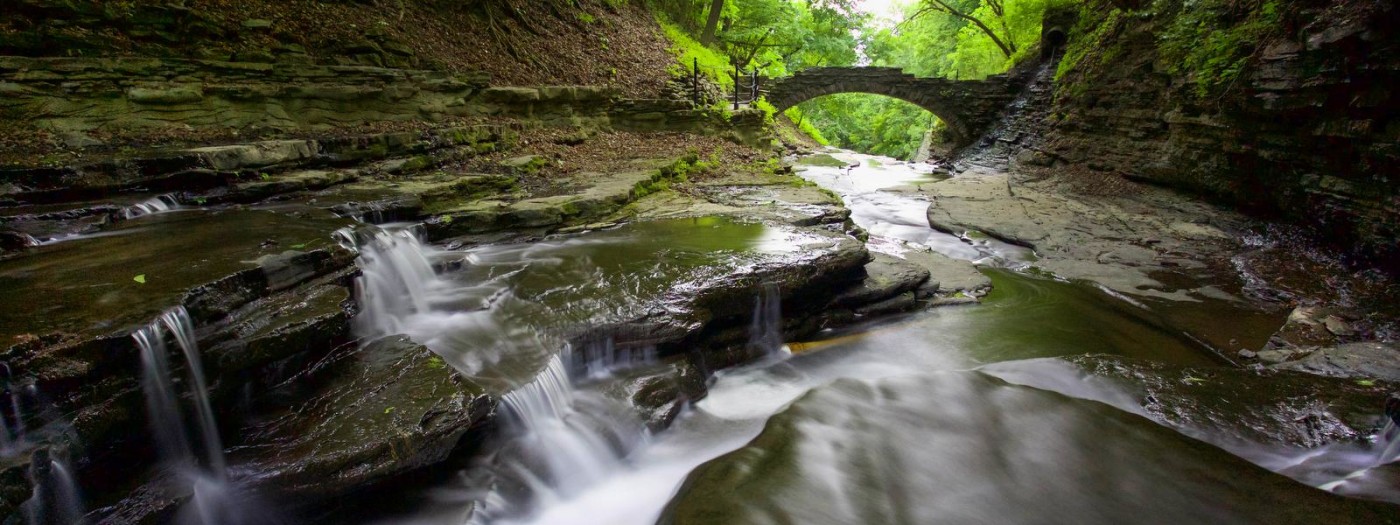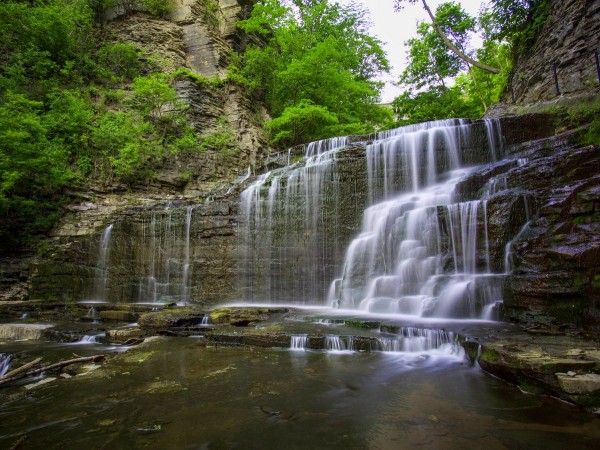Connective corridors are typically parks or natural areas that connect two distinct areas within a community — for example, separate neighborhoods or villages. Within the heart of Ithaca, there is no better example than Cascadilla Gorge. It is a stunningly beautiful connective corridor that runs from downtown to the Cornell campus.
The gorge is a short three-quarters of a mile in length, but it is long on amazing waterscapes. There are eight sizeable waterfalls that range from eight to 80 feet in height along this handsome stretch of Cascadilla Creek. The creek falls nearly 400 feet from the College Avenue Stone Arch Bridge on the Cornell campus to the Treman Triangle Park in Ithaca. The gorge trail basically mimics this climb/descent. And while the lower gorge section along Cascadilla Creek is certainly the most dramatic part of the trail, continuing north along the upper portion of the trail will provide an interesting juxtaposition. Here the creek is flat and placid and because this stretch is less frequented by the public in general (plenty of students use the trail to bisect the campus) the trail is quieter as well. This short section adds about a half-mile to the total trip length.
Moments after entering the gorge, the sounds of the city are drowned out by rushing water and the wild and exotic setting of the water-carved gorge takes over. As is the case with other gorges and waterfalls throughout the Finger Lakes, the dramatic waterfalls arise from the region’s origins as an ancient sea bed. Layer upon layer of sediment was created either by shale, limestone, or sandstone as the ancient sea bed and its millennia of deposits fluctuated. Crumbly shale is easily eroded but sandstone is more resistant and this divergence in erodibility is what creates the waterfalls and deeply cut gorges. Handsome stonework, staircases, and a stone-faced bridge found at the midpoint of the trail provide innumerable photo ops and dramatic scenes.
The lower “trailhead” is located at Treman Triangle Park in Ithaca off of Linn Street, while the upper “trailhead” is behind Cornell’s Schwartz Center for Theatre Arts on the Cornell campus. The theatre is across a roundabout along College Avenue next to Collegetown Bagels, a popular sandwich shop. Street parking is limited near campus, but there is one large pay lot, the Dryden Road garage, nearly due south of the upper gorge trail entrance and accessible off of Dryden Road.
The trail is open during daylight hours, early spring to late November but is often closed when icy conditions are present. The gorge can be treacherous so even though the setting for this gorge is “urban” use caution, remain on the designated trail, and respect trail closures. Some people have ignored these warnings and unfortunately paid with their lives. The issue is so persistent that the Cornell Botanic Gardens has created a gorge safety video.
If while walking the gorge you can’t help but reflect on how the gorge and its infrastructure resembles that of the nearby gorge state parks you probably won’t be surprised that their recent history is closely tied. Indeed the gorge was donated by Robert Treman, the same benefactor and philanthropist who gifted Enfield Glen to the state; Enfield Glen is now known as Robert Treman State Park. The Civilian Conservation Corps (CCC) also had a hand it making the gorge accessible to the public. In 2016, extensive work in renovating and rebuilding access and safety features were completed and the gorge will continue to provide amazement for future generations of residents, tourists and students alike.















